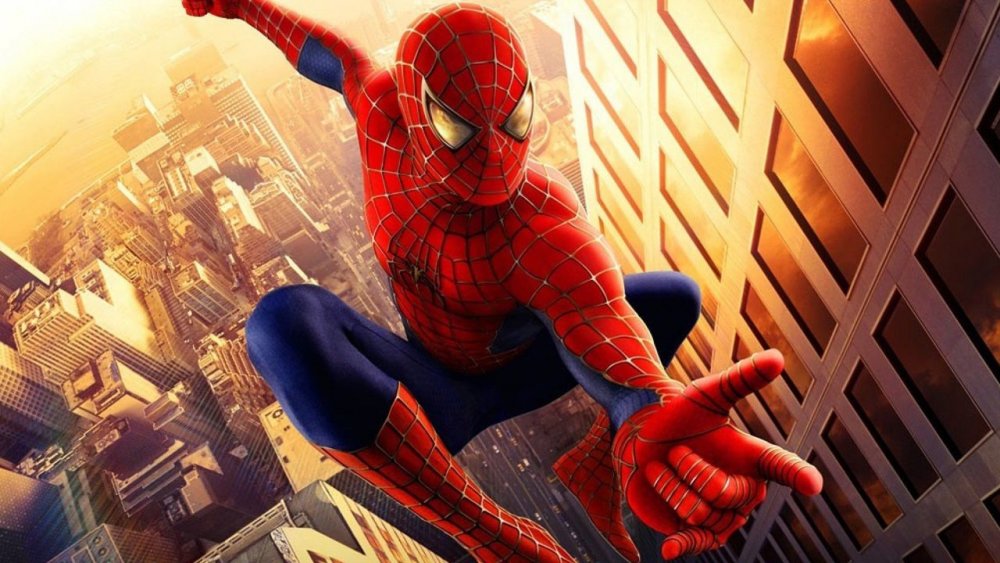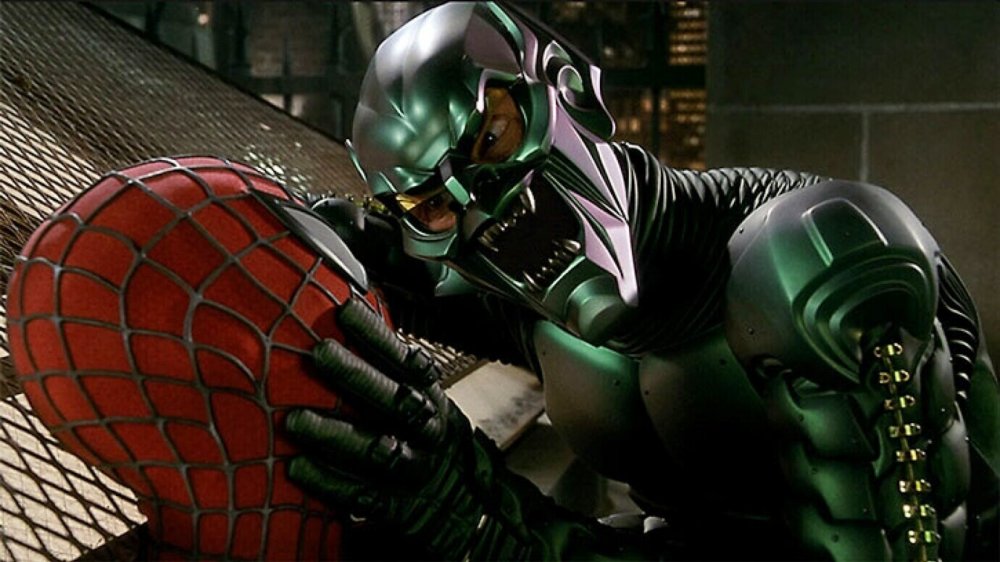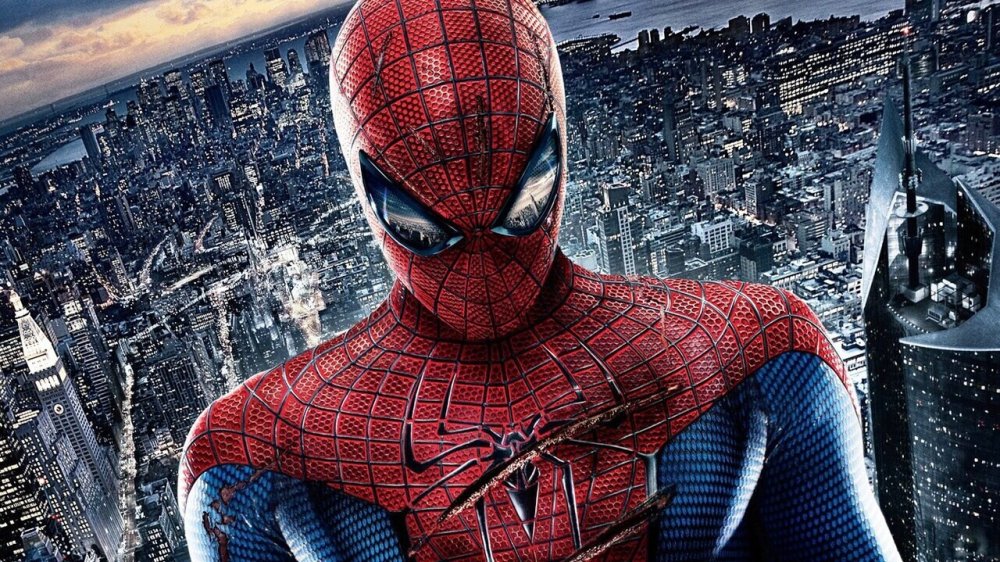What Sam Raimi's Spider-Man Trilogy Could Have Been Like
Sam Raimi's Spider-Man trilogy helped to usher in the modern era of superhero cinema — but it might have been completely different.
Veteran screenwriter David Koepp, who worked on the first film, recently spoke to Collider about ideas he had for the trilogy that never came to fruition. If they had, we might have gotten a film series that hewed much closer to the Spidey comics — and one that would have been quite ahead of its time.
A bit of background: Although Koepp enjoys sole credit for Spider-Man's screenplay, he actually only wrote the first draft, which was based heavily on a famous treatment by James Cameron. While the Green Goblin did make an appearance in Koepp's first draft, Electro was also a primary villain; Cameron's story also included Doctor Octopus, but Koepp scrapped that idea (via The Los Angeles Times).
Con Air and Gone in 60 Seconds scribe Scott Rosenberg heavily revised Koepp's Spider-Man draft, dropping Electro and making major changes to the story. Alvin Sargent, who would go on to co-write the other two films in Raimi's Spider-Man trilogy, then gave that script a dialogue polish. In spelling out to Collider a few of the changes that were made, Koepp alluded to the fact that some of Rosenberg and Sargent's tweaks to the first film's script had a profound impact on the Spider-Man trilogy as a whole.
"Basically, [my idea] was the telling of the [Gwen Stacy/Harry Osborn] story, but I spaced everything out differently," Koepp explained. "I wanted Gwen to be killed in the middle of the second movie, because that follows sort of the Empire Strikes Back model, and I had different villains I wanted to use. Just a different way to tell that story."
The David Koepp-written Spider-Man trilogy would have been radically different
Koepp's reference to Gwen Stacy produces a domino effect that leads us to the conclusion that if he had written the entire Sam Raimi Spider-Man trilogy, it would have turned out virtually nothing like the one we got. The most significant change: Spider-Man somewhat inexplicably followed the standard set by Tim Burton's Batman, in which the villain — who is hands-down the hero's most iconic arch-enemy — perishes in the very first film. In the comics, the Green Goblin kills Gwen Stacy — a detail that Koepp probably wouldn't have dared to change.
This means that ol' Green Gobby likely would have survived the events of Spider-Man, and returned in the second movie to kill Peter Parker's girlfriend — a storyline that's a sight darker than the one Sargent came up with for Spider-Man 2. Also, you'll recall that Gwen (portrayed by Bryce Dallas Howard) didn't even make an appearance in Raimi's trilogy until Spider-Man 3, and she never did meet her fate from the comics on the big screen. (Emma Stone's Gwen, on the other hand, did die in the Amazing Spider-Man franchise several years later, but more on that in a bit.)
We can also infer from Koepp's remarks that Mary Jane Watson, portrayed by Kirsten Dunst in the trilogy, may not have made an appearance in the first movie — perhaps not at all. It likewise stands to reason that Spider-Man 3, the most maligned movie of the bunch by far, would have simply been a totally different film. It seems that Koepp had a pretty specific (and from a comic book movie standpoint, more modern) arc planned for Spidey that would have seen him in his darkest place at the conclusion of Spider-Man 2. By contrast, Raimi, Rosenberg, and Sargent seemed to largely burn through all of their best story ideas with the first two films — leading to a "throw it at the wall and see if it sticks" approach to the third picture, which resulted in ... well, hardcore villain bloat, Emo Peter Parker, and That '70s Symbiote.
Why didn't David Koepp return to the reboot franchise?
You may recognize Koepp's storyline as being pretty similar to what we saw in the rebooted Amazing Spider-Man films, which starred Andrew Garfield as ol' web-head and Emma Stone as Gwen Stacy. In The Amazing Spider-Man 2, the Green Goblin (albeit the Harry Osborn version, portrayed by Dane DeHaan) drops Gwen off a clock tower. She meets her demise when Spidey's potentially life-saving webline slows her fall too quickly and snaps her neck.
As it turns out, Sony did consider bringing Koepp back to give the storyline another whirl, but the scribe decided against it for a pretty simple reason: At the end of the day, he couldn't get himself jazzed enough about ideas he'd had a decade prior.
"There was a time maybe seven or eight years ago when I was gonna come back for a couple Spider-Man movies, after they'd done their first Amazing Spider-Man," Koepp recalled. "I was excited to come back and try to finish the story I started telling in the first one, and as we were about to agree that I was going to do that, I pulled out all the old stuff and I started outlining those two movies and I thought, 'Boy, you can't go home again. That moment has passed. The time when I was really feeling it was 10 years ago, and there's no point in trying to recreate it.' So I bailed."
That's a bummer, but it's understandable. And as a "consolation prize," The Amazing Spider-Man 2 went over like a lead balloon, leading Sony to cut the deal with Marvel Studios that brought the web-slinger into the Marvel Cinematic Universe, where he's played by Tom Holland, whom we love. It's always interesting to think about what might have been, but Spidey fans have to feel pretty good about how it all shook out.


